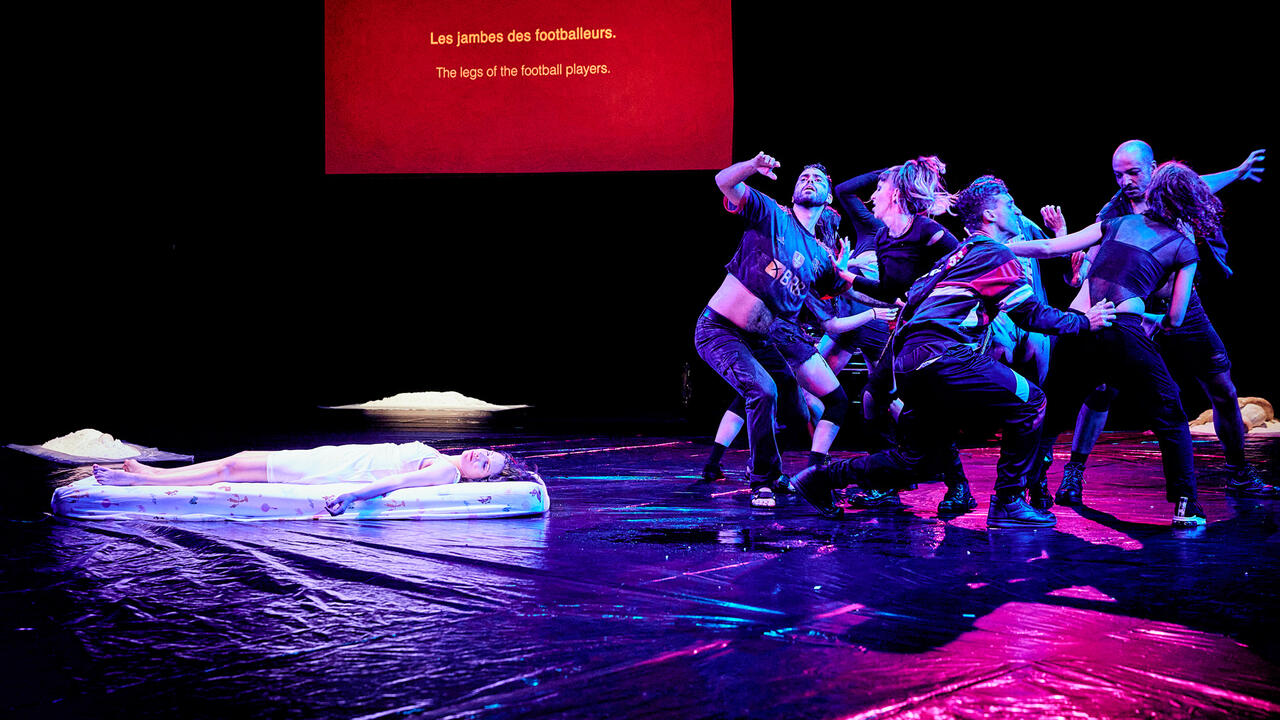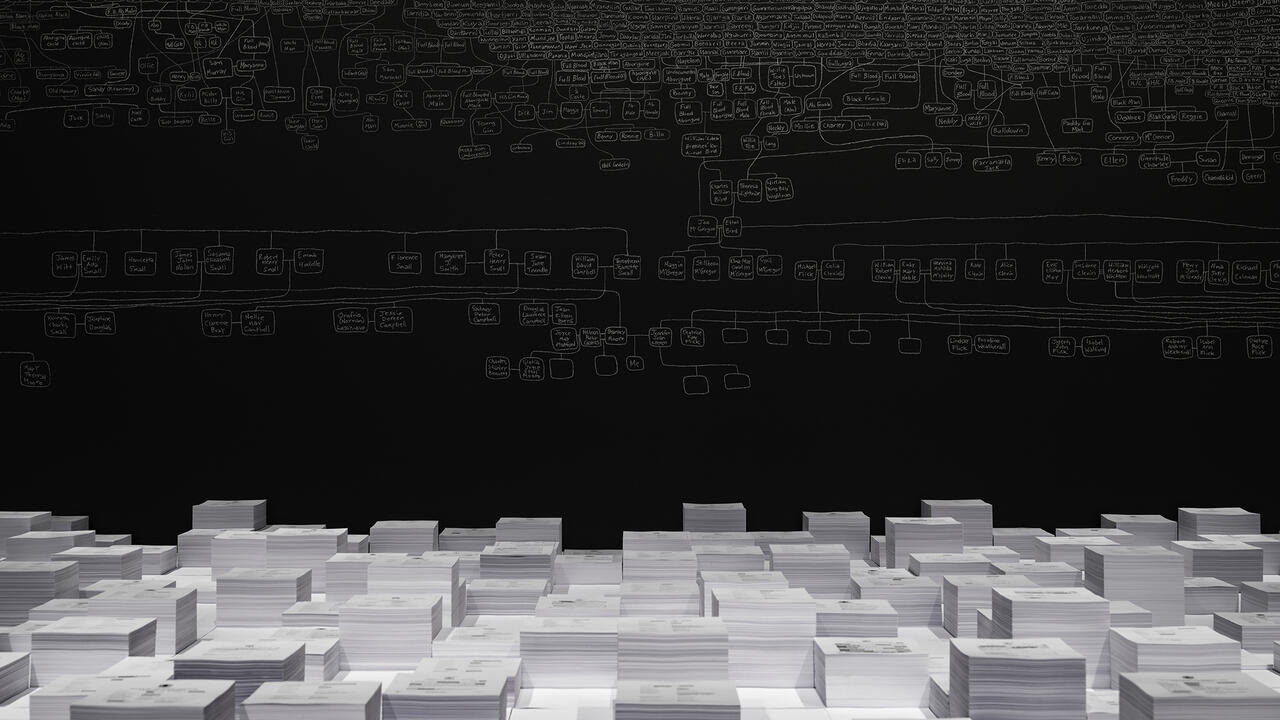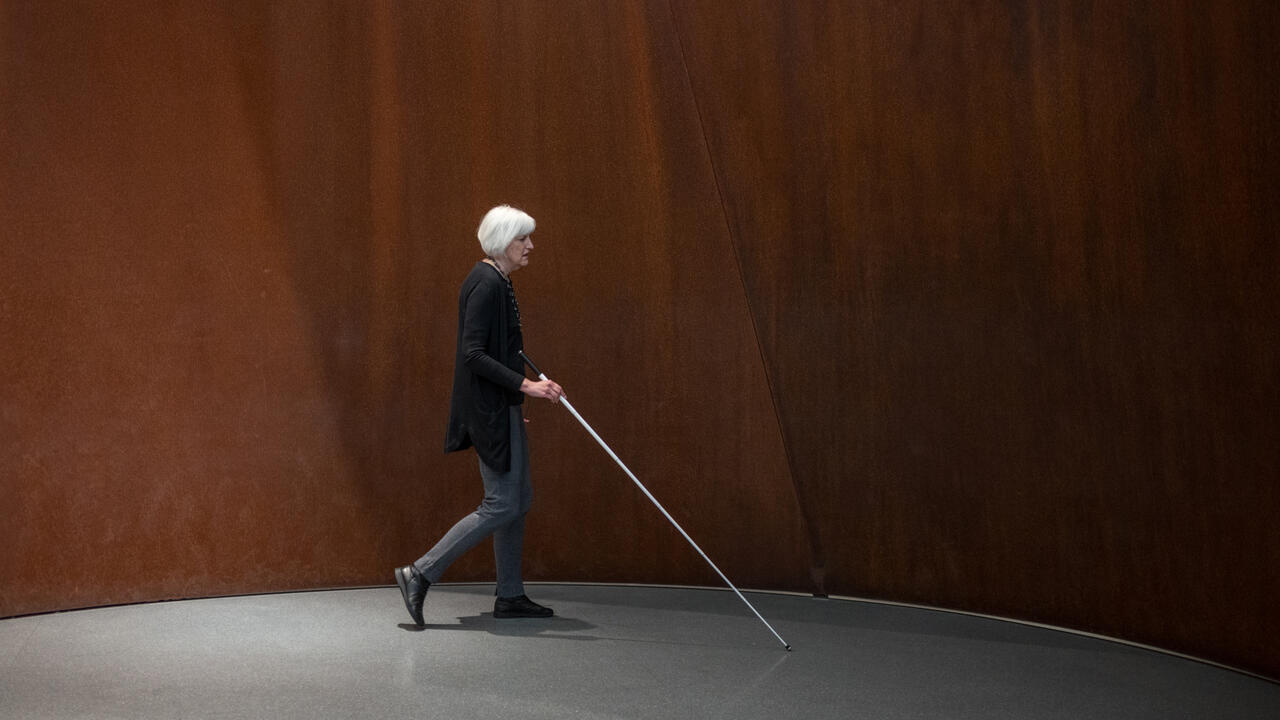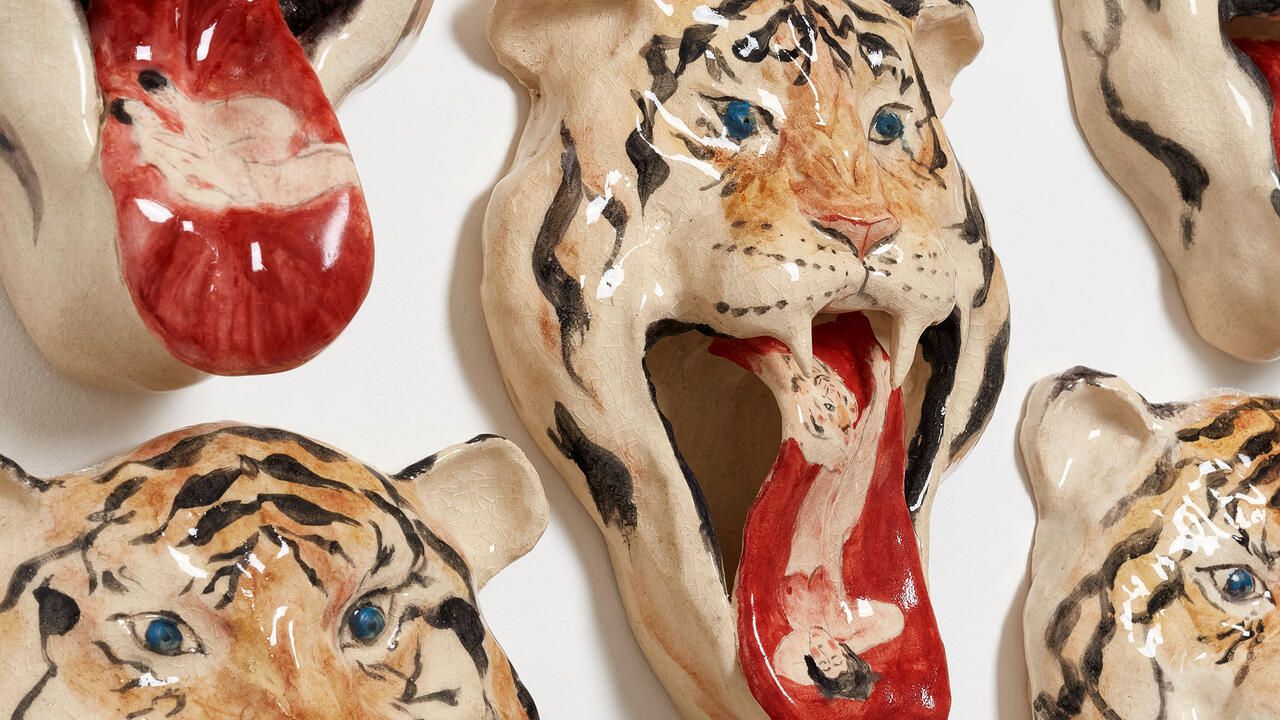Alasdair Gray and Stuart Murray

While Alasdair Gray may be primarily renowned as a writer, it’s important to remember that he hasn’t stopped drawing and painting since he left Glasgow School of Art in 1957. It’s extraordinary to discover that this modest outing is his largest exhibition since 1986. Although he is a trained muralist, most of his art is known through the woodcuts and illustrations he produces concurrently with his writing. Reminiscent of totemic ideographs and illuminated Celtic manuscripts, designs for books such as Poor Things (1992) are his most public art works. This exhibition also gives access to private portraits of family and friends – Juliet in Red Trousers (1976) and Marion Oag in Alasdair’s Studio (1968) – all revealing his crisp and confident draughtsmanship and his predilection for the decorative. Gray sways between making graphic work that appears to be designed to be seen from a distance and creating ornate images best viewed through a magnifying glass. Such is the case with the cataclysmic ink drawing Faust in his Study (1958), which now, sadly, exists only in the form of a photocopy, an opaque image that competes in complexity with the cover illustration by Abraham Bosse for Thomas Hobbes’ Leviathan (1651).
A number of early art school works, including the noir-esque period pieces Night Street Self-Portrait (1953) and Clergyman with Ominous Street Scene (1952), show the flourishing of Gray’s idiosyncratic imagination. His epic novel Lanark (1981) is known for its lengthy passages of meta-fiction, the author liberally entering into discussions with the main character or offering the reader extended notes on his acts of plagiarism. A similarly playful Kunstwollen belies Gray’s grandest pictorial schemes. Night and Daybreak (2003) is a cosmological sketch on plaster for what will surely prove to be his magnum opus. Arguably the most ambitious public art work in Scotland, the mural scheme has been slowly developing in recent years in Òran Mór, an auditorium, theatre, night-club, bar and restaurant that occupies the former Kelvinside parish kirk in Glasgow. Extending the meta-fictive universe of Lanark, Òran Mór takes the role of the Elite Café while Gray plays his alter-ego character Duncan Thaw, who, in Lanark, vainly attempts to paint the story of Genesis in Cowlairs parish kirk. ‘Imaginatively Glasgow exists as a music-hall song and a few bad novels,’ bemoans Thaw. ‘That’s all we’ve given the world outside. That’s all we’ve given ourselves.’ Thaw’s quest to paint his city imaginatively is materializing in Òran Mór. The ceiling depicts the night sky and zodiac constellations as sentinel to Glasgow’s landmarks. Below this lies the dark kirk hall, filled with portraits of people associated with the building since 1862, including its current secular occupants. All of this is mixed with Gray’s signature stencilled gold thistles, roses, leeks, harps and Celtic designs. The scheme rallies against the kirk’s prescriptive Calvinist inheritance; it is speculative, outward-looking and inventive. It’s appropriate, however, that to date Gray hasn’t finished the mural.
Gray has optimistically advocated working ‘as if you were living in the early days of a better nation’. Stuart Murray’s observational drawings imply that most Scots haven’t even woken up yet. Since leaving Glasgow School of Art in 2001, Murray has had a number of unskilled jobs. One of these formed the basis of 7 Week Filing Job, a book illustrating the astringent musings, internalized repression, cynicism and fears of his middle-aged colleague, a former shipyard worker. People I’ve Met While Working profiles the customers Murray encounters while doing his round as a familiar postman in the East End of Glasgow every weekday. They form a picture of a disintegrating community: families looking out for each other’s Giros arriving, a blind man who has no helpers, lonely elderly women looking for a bit of company. The narrative returns to the chronic waste of talent and its impact on ambition and opportunity. Young arts graduates such as Murray and older skilled labourers find that they have something in common – namely, that they have no place in the information economy. Murray, who looks like he has stepped out of Gray’s painting Cowcaddens in the 1950s (1964), always remains invisible. While the book contains a great deal of humour, it’s of the blackest sort, pitched between Gray’s Glaswegian dystopia ‘Unthank’ and Limmy’s World of Glasgow podcast. The crucial difference is that Murray’s dialogue is without embellishment – his work almost makes itself. As Gray has commented: ‘Had you been keener on very fine draughtsmanship or fonder of writing your own social commentaries instead of reporting the words of others, you would not be such a successful, Almighty Gods, spy.’
‘In Pubs’, a new folio of drawings made in old bars in Glasgow, provides an incisive balance of nostalgia, pathos, drollness and resignation. The self-confidence that drunkenness creates makes them among Murray’s most instructive works. Each of the drawings features a different regular, offering some histrionic succour and wisdom. ‘Never mind, this fuckin’ cancer’ll be cleared up in a couple a weeks!’ submits a drinker as he determinedly slams his hand on the bar. A 64-year-old man, having cared for his mother for most of his life, tells how she died shortly after being taken into a home; another man asks Murray to help him phone his daughter as he can’t see the numbers. Glaswegian pub philosophers are also out in force. One man claims to have conclusive research that proves that Glasgow is about to be taken over by homosexuals. ‘Huv ye ever hid a wummin pish oan ye? Fuckin brulliant pishin aw err ye an yer lyin there huvin a wank,’ muses another man. ‘Aye … Hitler wiz right intae it.’ Murray’s work is a sharp reminder of why there are still so many marketing campaigns to window-dress the image of Glasgow by selling it as a premier shopping destination. He represents the population left behind by technological change and left out of the gentrification process – in other words, the majority of the city’s inhabitants.

















